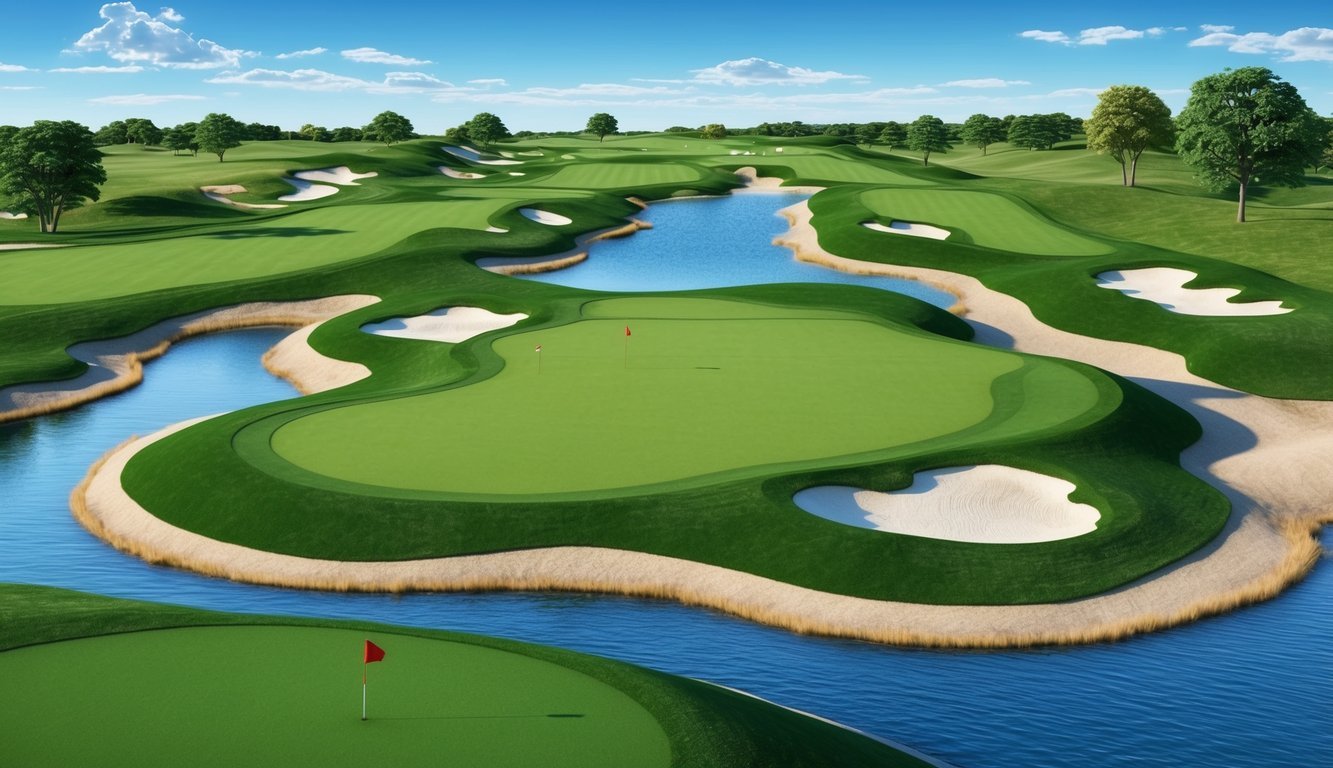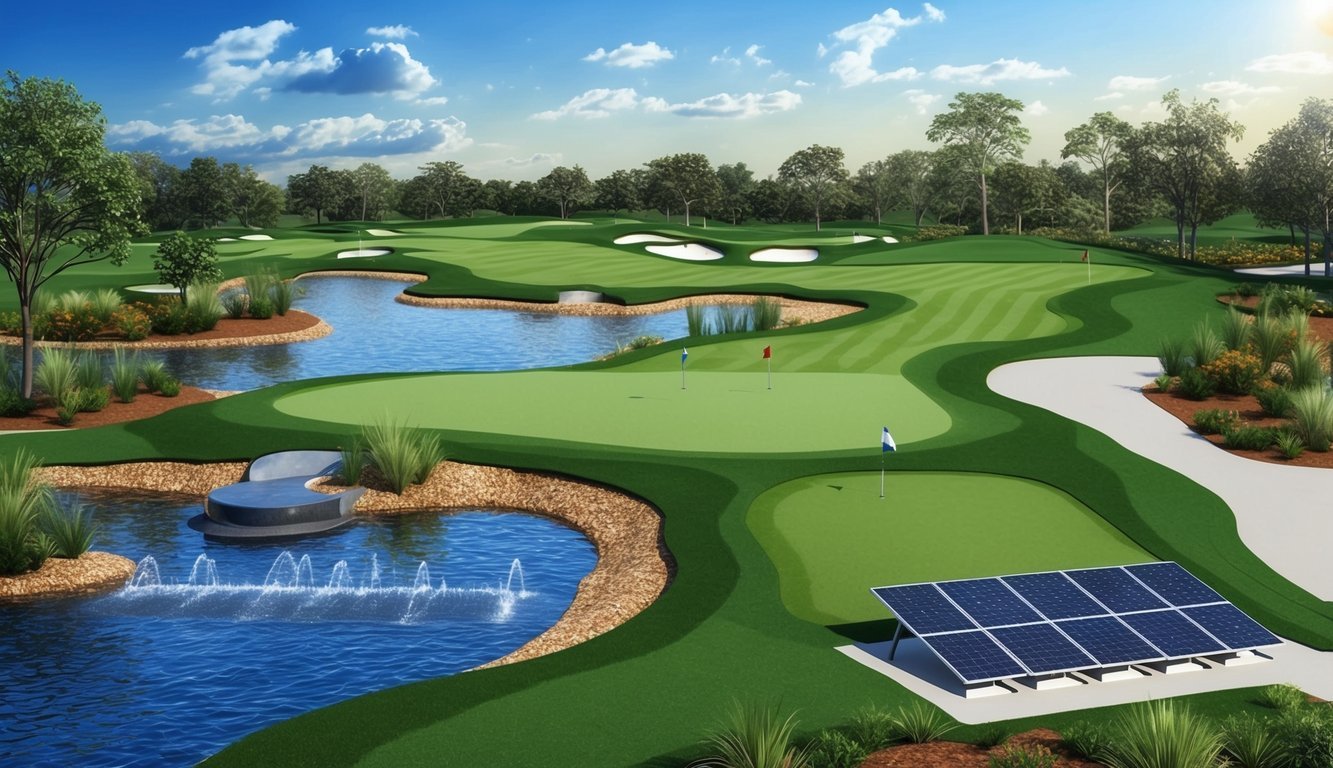When you step onto a golf course, you’re entering a world carefully crafted by experts.
The artistry and strategy of golf course design combine to create not just a playing field, but an experience.
Each element of the design influences how a course plays and feels.
Understanding these aspects enriches your connection to the game itself.

Have you ever wondered why some courses seem easier or more challenging? It’s all about the thoughtfulness of golf course design.
From the iconic bunkers to expansive fairways, these features are not random; they are meticulously planned to test skill levels and enhance enjoyment.
Each decision made in the design process affects the rhythm and flow of the game.
Getting a behind-the-scenes look at how courses come to life can deepen your appreciation for every round you play.
Whether you’re a seasoned player or a newcomer, exploring the evolution and strategy behind your favorite course might just change how you approach the game.
Dive in to learn more about the intricacies that make each course unique.
Key Takeaways
- Golf course design blends artistry and strategy.
- Design elements impact playability and enjoyment.
- Understanding design can enhance your golf experience.
Evolution of Golf Course Architecture
Golf course architecture has undergone significant changes over the years, influenced by historical figures and modern innovations.
From the early days focusing on natural landscapes to today’s strategic designs, understanding these shifts can enhance your appreciation for the game.
Historical Influences
The roots of golf course architecture are anchored in the late 19th and early 20th centuries, often referred to as the Golden Age.
Pioneers like Alister MacKenzie and Donald Ross emphasized harmony with the natural landscape, creating courses that challenged and delighted players.
Courses from this era often used the land’s natural contours, incorporating hazards like sand and water to craft strategic holes.
The American Society of Golf Course Architects (ASGCA) was established to promote quality and innovation in course design.
It became a platform for sharing ideas among designers, significantly impacting the standards and styles of golf courses.
Key figures like Arnold Palmer further popularized the sport, contributing to a surge in golf course development during the mid-20th century.
Modern Golf Course Design
Today, modern golf course design often involves balancing aesthetics, playability, and sustainability.
Designers like Tom Fazio and Jack Nicklaus have shaped contemporary courses with their distinctive styles.
Nicklaus Design, known for its strategic and challenging layouts, offers courses that test every aspect of a golfer’s skill.
Innovators like Tom Doak emphasize minimalism and environmental stewardship, favoring designs that maintain the natural beauty and ecology of a site.
The modern approach often includes advanced technology in planning and construction, allowing architects to create sustainable courses that appeal to a wide range of players.
Notable firms like Fazio Design and contributions from figures like Tom Weiskopf continue to advance the golf industry through their unique perspectives and dedication to excellence.
Planning and Strategy
When planning a golf course, architects focus on the routing and layout to create a challenging and enjoyable environment for players of all skill levels.
Strategy plays a key role in balancing distance, variety, and difficulty.
Routing and Layout Strategies
In crafting the routing and layout of a golf course, architects consider how to maximize the natural landscape features.
Integrating elements like elevations, water, and existing vegetation can enhance the course’s beauty and strategic depth.
By designing each hole to flow seamlessly, the course provides an engaging experience.
Variety is essential in keeping the game interesting.
Alternating hole lengths and orientations challenge players to think carefully about each shot.
For instance, a dogleg left followed by a par-3 forces different strategic considerations.
A well-planned layout offers routes that consider the skills of the average golfer while still providing challenging options for those with lower handicaps.
This balance ensures that the course remains engaging for everyone.
Challenge and Playability
Striking a balance between challenge and playability is crucial.
Golf course architects design holes with varying difficulty levels to test different aspects of a player’s game. Challenging holes might feature hazards like bunkers or water, strategic pin placements, and elevations that require precision.
Playability ensures that even less-skilled players can enjoy their round.
Wide fairways and clear sightlines make a course more accessible, reducing frustration.
Courses designed with a range of skill levels in mind offer both challenge and enjoyment.
Providing multiple tee options also allows golfers to choose the right starting point for their skill level, enhancing the overall experience.
This flexibility accommodates a broad range of abilities, ensuring that both seasoned players and beginners find the course rewarding.
Design Elements

In golf course design, understanding the interplay between terrain and strategic layout is crucial.
The thoughtful positioning of tees, greens, and various obstacles transforms an ordinary stretch of land into a challenging and engaging golf experience.
Tee to Green Considerations
When evaluating the elements from tee to green, the key is to balance challenge and fairness.
Placement of tees is vital in setting the right difficulty level.
By varying tees, designers can cater to players of different skill levels, creating a diverse playing field from beginners to advanced players.
The fairways serve as the guiding pathways to the greens.
Their width and contour are crafted to encourage strategic decisions, especially on approach shots.
At courses like Pebble Beach, you’ll find that the relationship between fairways and greens becomes an art form.
The greens themselves, with their varying undulations, require careful study before making a putt.
This dynamic sequence from tee to green creates an immersive golfing journey.
Hazards and Bunkering
Obstacles such as bunkers and water hazards play a central role in defining both the strategy and aesthetics of a course.
Bunkers are strategically placed to challenge your shot accuracy and decision-making on the fairway or approach to the green.
The design of bunkers, their depth, and their placement can determine the success of a game.
Water hazards, often used to increase difficulty, compel players to consider risk versus reward for each shot.
These features, along with carefully maintained rough and strategically placed trees, serve as both challenges and ornaments to the landscape.
Each element is meticulously designed to test skill levels while offering a visually appealing contrast to the lush fairways.
Environment and Sustainability

When designing a golf course, it’s crucial to consider the environment and sustainability to ensure minimal impact on local ecosystems.
This involves making thoughtful choices about location and implementing eco-friendly practices to maintain vibrant and healthy course conditions.
Location-Specific Design
The location of a golf course plays a key role in its design and sustainability.
Identifying the unique features of a golf course site allows you to create a layout that complements the natural landscape while reducing potential environmental damage.
Consider the region’s climate and biodiversity when selecting a site, ensuring that the development aligns with natural landforms and existing ecosystems.
By integrating local vegetation and utilizing natural water sources, you can enhance aesthetics and sustainability.
This approach can also help you maintain fairways and greens with fewer resources.
Golf courses can balance beauty and ecology by selecting strategic locations and designing with sensitivity to local environmental factors.
Eco-Friendly Practices
Embracing eco-friendly practices in golf course development ensures long-term sustainability.
You should explore options like utilizing organic fertilizers and pesticides, which reduce chemical runoff and protect both the course and surrounding environment.
Efficient water management systems, such as drip irrigation, can significantly conserve water usage while keeping course conditions optimal.
Implementing renewable energy solutions, like solar panels, can further enhance the course’s energy efficiency.
Consider using recycled materials during renovations to minimize waste.
Prioritizing the safety of local wildlife through carefully planned landscaping can foster a healthy ecosystem.
By adopting these practices, you contribute to a greener future while maintaining a high-quality golfing experience.
The Business of Golf Courses

Golf course design is not just about aesthetics and creativity.
It involves strategic decisions, renovation efforts, and effective marketing to attract players and accolades.
Understanding these aspects can help you appreciate the complexity and dynamism involved in managing golf courses.
Renovation and Repositioning
Renovation and repositioning play a crucial role in maintaining the appeal and functionality of golf courses.
Engaging a respected golf course designer is essential for these tasks.
For instance, Bill Coore and Ben Crenshaw are known for their skill in repositioning courses to enhance their appeal and playability.
Locations such as Mexico and the Bahamas often see frequent renovation projects to cater to an international clientele.
A well-executed renovation can help course owners attract new members and retain existing players.
These changes can include updating bunkers, improving drainage, or redesigning specific holes to enhance the overall golfing experience.
You should consider consulting with professionals to ensure that renovations not only improve the visual appeal but also meet the standards required for competitive play.
Marketing and Awards
The marketing of a golf course is pivotal in its success.
Utilizing awards and accolades can significantly boost a course’s reputation.
You can leverage awards to highlight unique features or recent upgrades.
Award-winning courses often attract more players, as these accolades signal high standards and exceptional experiences.
To keep your course in the spotlight, stay updated with the latest news in the golfing industry.
Aligning marketing strategies with trending topics can give your course a competitive edge.
Collaborating with well-known designers or hosting prestigious tournaments can also enhance visibility and attract a broader audience.
Engaging in these marketing strategies ensures sustained interest and patronage from both seasoned golfers and newcomers.

